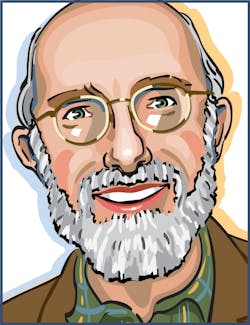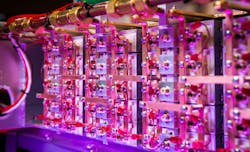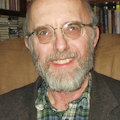
A new international organization, called ELI-ERIC, is being formed to operate the three facilities using funds that richer member countries pay to sponsor research. Getting ELI-ERIC up and running will take a couple of years, but when it starts later this year Hvezda says it will only involve two facilities near completion: ELI Beamlines, which fires the shortest pulses, and the ELI Attosecond Light Pulse Source (ELI-ALPS) (Szeged, Hungary) which fires at higher repetition rates. According to Nature, this normally would require at least three countries, but Italy is willing to step in to meet that requirement.
ELI-NP will include both laser and gamma-ray sources. The laser, a pair of 10-petawatt lasers coherently combined to generate peak intensities of 1023 to 1024 W/cm2, is almost operational. But the gamma-ray source is stalled, and three to four years would be needed to complete it if Romania insists on starting from scratch, Hvezda says. Only then would Romania be able to join ELI-ERIC and begin scientific operations.
Other budget tensions are simmering in the background. The Hungarian government and ELI's international advisors have argued about the choice of projects for ELI-ALPS. Both Hungarian and Romanian governments also worry that larger European countries won't deliver on their earlier promises to fund ELI-ERIC operating costs, leaving the small host countries stuck paying most of the bills from modest research budgets.
Nonetheless, ELI's budgetary issues are small potatoes compared to money pits in big-budget countries. Initially budgeted at under a billion dollars, the National Ignition Facility was several years late and cost some $3.5 billion.
About the Author
Jeff Hecht
Contributing Editor
Jeff Hecht is a regular contributing editor to Laser Focus World and has been covering the laser industry for 35 years. A prolific book author, Jeff's published works include “Understanding Fiber Optics,” “Understanding Lasers,” “The Laser Guidebook,” and “Beam Weapons: The Next Arms Race.” He also has written books on the histories of lasers and fiber optics, including “City of Light: The Story of Fiber Optics,” and “Beam: The Race to Make the Laser.” Find out more at jeffhecht.com.

